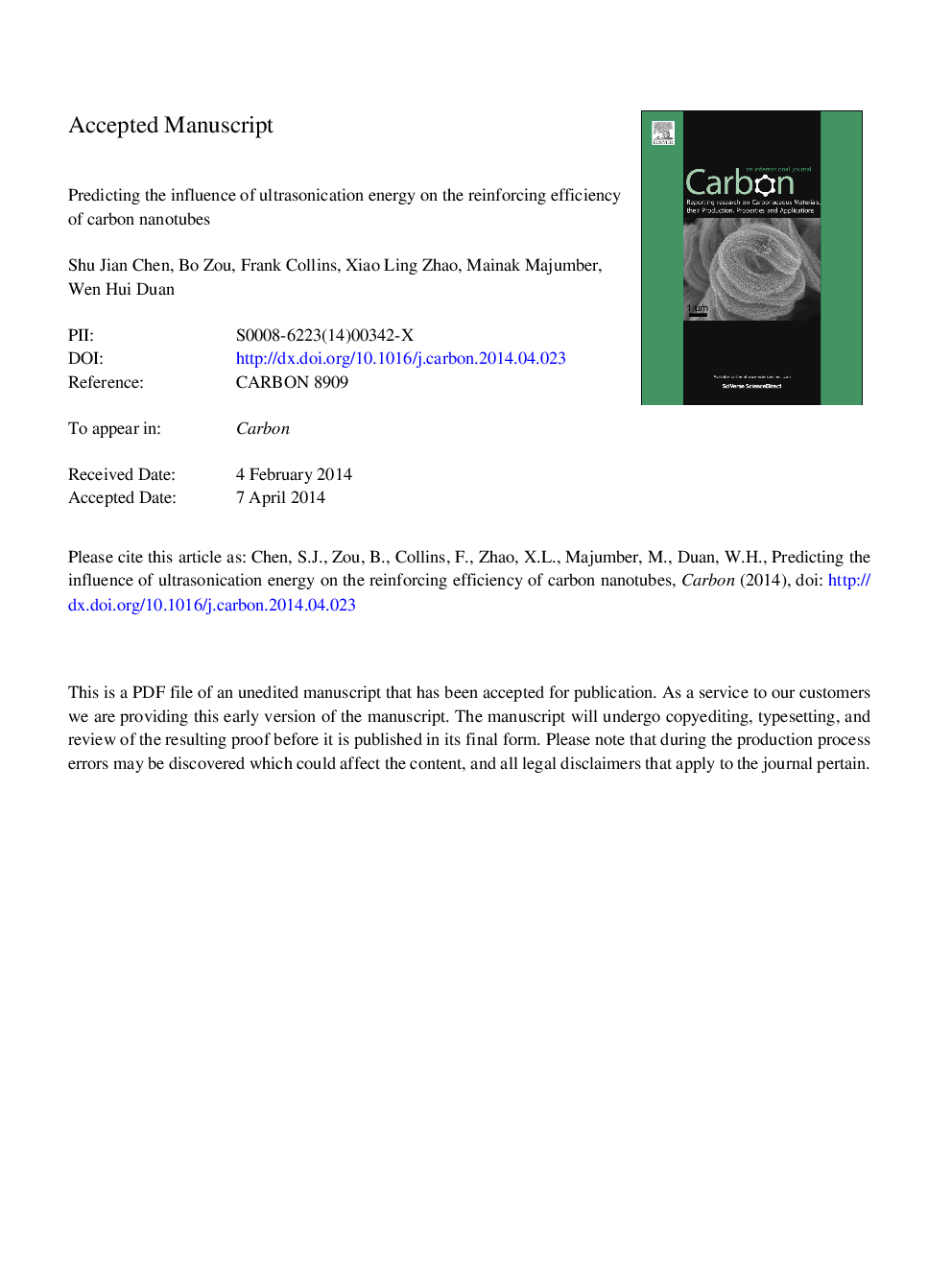| Article ID | Journal | Published Year | Pages | File Type |
|---|---|---|---|---|
| 7852848 | Carbon | 2014 | 27 Pages |
Abstract
Ultrasonication is extensively used in the fabrication of carbon nanotube (CNT) reinforced composites. However, there has been very limited research into predicting the effect of ultrasonication treatment on the reinforcing efficiency of CNTs. In this study, a theoretical framework with supporting experiments is developed to address this issue. The distribution of CNT lengths and the concentration of dispersed CNTs are characterized using scanning electron microscopy images and UV-vis spectra. After ultrasonication, the length of CNT is found to follow log-normal distributions which show a shortening effect. The concentration of dispersed CNT increases with ultrasonication energy but reaches a plateau after about 250Â J/ml. The distribution of CNT lengths and the concentration of dispersed CNTs are incorporated into a micromechanics-based model to simulate the crack bridging behavior of CNTs. Results show that the distribution of CNT lengths leads to better estimation of reinforcing effect than does the average length. Furthermore, for unit volume of dispersed CNTs, the reinforcing efficiency decreases monotonically with increased ultrasonication. Based on the proposed model, the predicted optimal ultrasonication energy (89Â J/ml) for reinforcing is found before the dispersion plateau is reached.
Related Topics
Physical Sciences and Engineering
Energy
Energy (General)
Authors
Shu Jian Chen, Bo Zou, Frank Collins, Xiao Ling Zhao, Mainak Majumber, Wen Hui Duan,
